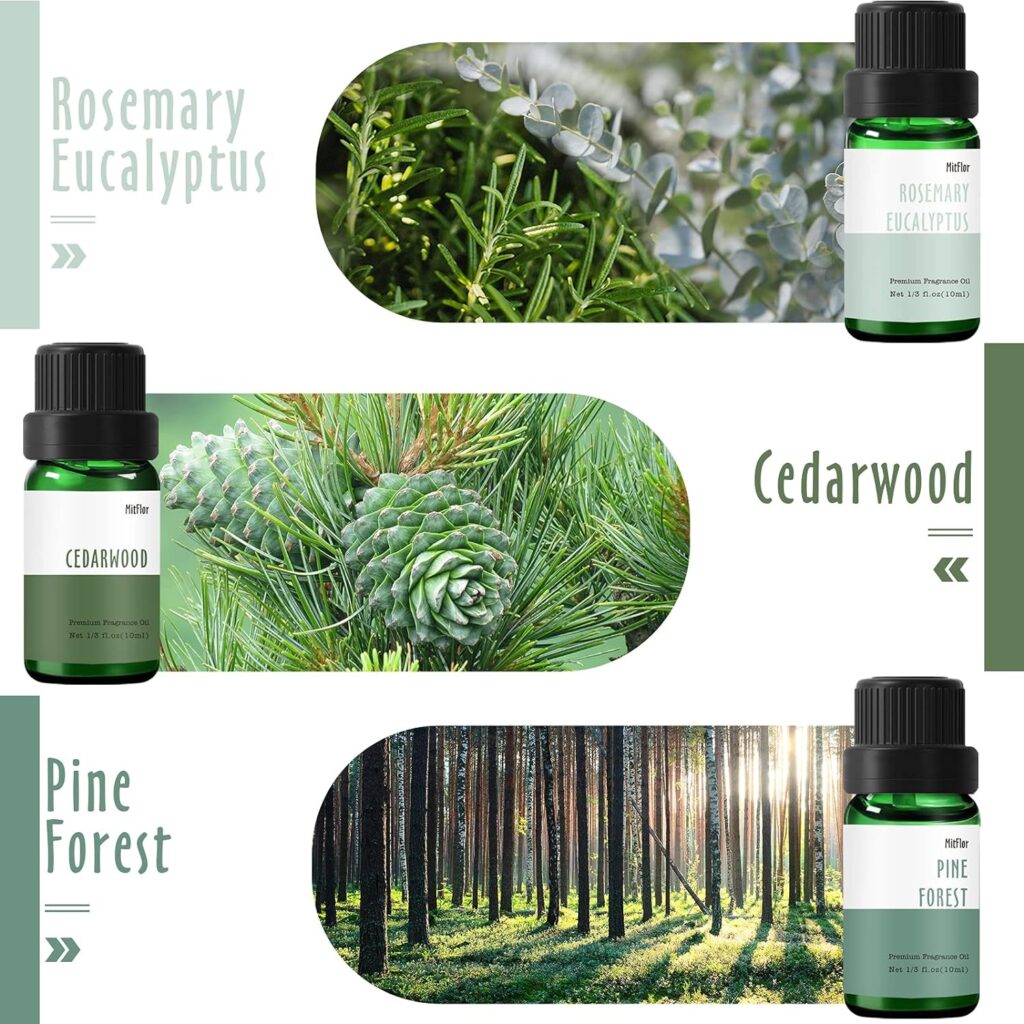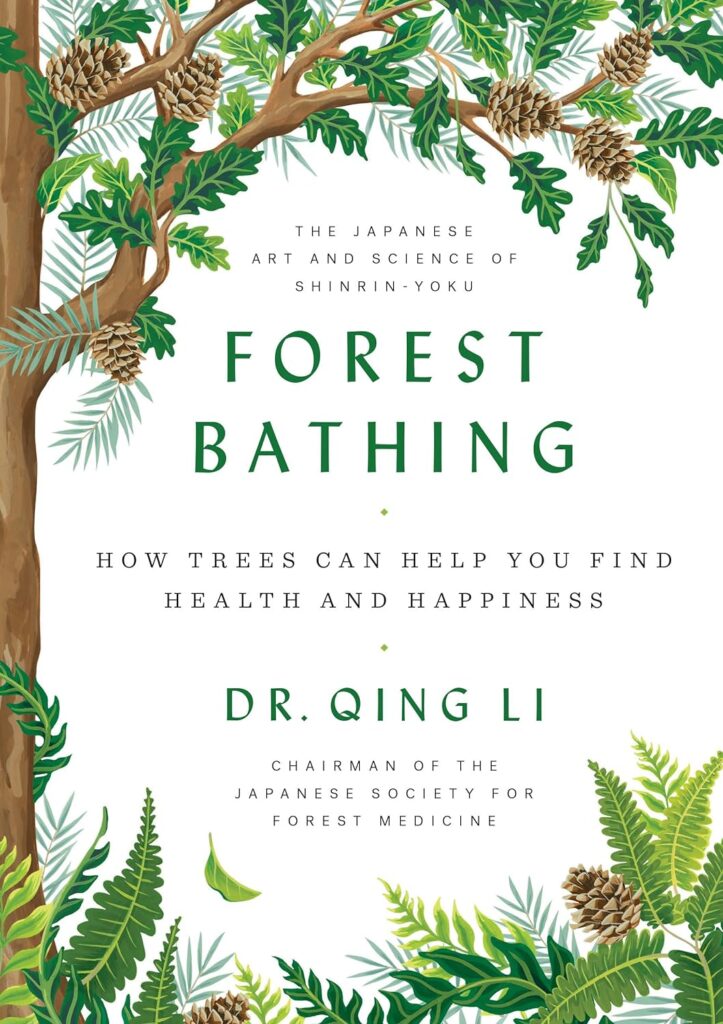Your phone buzzes again! A deadline looms.
Your heart rate ticks up a notch, and that familiar, low-grade hum of anxiety begins to vibrate in your chest.
In our modern world of constant stimulation, this feeling has become a default setting for many of us.
We reach for another cup of coffee, scroll endlessly through social media, or lie awake at night, our minds racing.
But what if the antidote to this modern malaise wasn’t found in a prescription bottle or a productivity app, but in the dappled light of a quiet forest?
What if the solution were as simple as breathing?
This is the promise of Shinrin-Yoku, a Japanese term that translates to “forest bathing.” It doesn’t mean taking a dip in a stream.
Instead, it is the practice of immersing yourself in the atmosphere of the forest, mindfully engaging your senses.
It’s a form of nature therapy that is now backed by a growing body of scientific evidence showing its profound ability to reduce anxiety, lower stress, and restore our sense of calm.
This is your guide to understanding why it works and how you can practice it.
Consider this your prescription for a dose of Nature’s Xanax.
More Than a Walk: What Forest Bathing Really Is
Before you picture a strenuous hike up a mountain, let’s clear something up.
Forest bathing is not about exercise. It’s not about reaching a summit, tracking your pace, or burning calories.
- A Hike is Goal-Oriented. It’s about distance, speed, and achievement.
- Forest Bathing is Presence-Oriented. It’s about connection, sensation, and simply being.
Imagine walking through the woods with no destination.
You stop to feel the rough texture of bark under your fingertips.
You pause to close your eyes and listen to the symphony of wind rustling through the canopy above, then inhale deeply, taking in the complex, earthy scent of damp soil and pine.
This is Shinrin-Yoku.
It is the art of bathing in the forest with all your senses, allowing its calming energy to wash over you.
Born in Japan in the 1980s as a response to a national health crisis of tech burnout and stress, it was officially prescribed as a form of preventative medicine.
Today, it’s a cornerstone of Japanese public health.
The Science of Solace: How Trees Calm Your Anxious Mind
The beauty of forest bathing isn’t just poetic; it’s physiological.
This isn’t just a nice idea; it’s a science-backed intervention that creates measurable changes in your body, shifting it from a state of stress to a state of repair.
Phytoncides: The Trees’ Invisible Healing Power
The very air of the forest is medicine.
Trees release protective substances called phytoncides, volatile organic compounds that protect them from germs, insects, and rot.
When we walk through a forest, we inhale these compounds.
The science is stunning: A landmark study led by Dr. Qing Li from the Nippon Medical School in Tokyo found that inhaling phytoncides:
- Boosts Immune Function: It increases the number and activity of our body’s Natural Killer (NK) white blood cells, which are crucial for fighting infections and cancer.
- Lowers Stress Hormones: It significantly reduces levels of the stress hormone cortisol in our saliva.
- Lowers Blood Pressure and Heart Rate: It prompts a shift toward a more relaxed state.
Simply by breathing in the forest air, we are triggering a powerful biochemical response that counteracts the physical effects of anxiety.
A Nervous System Reset
Anxiety keeps our sympathetic nervous system, our “fight-or-flight” response, locked in the “on” position.
Forest bathing acts as a switch, engaging our parasympathetic nervous system, our “rest-and-digest” mode.
Research studies using heart rate monitors and other biomarkers consistently show that after even short periods of forest bathing, participants exhibit:
- Reduced cortisol levels
- Lower pulse rate
- Decreased blood pressure
- Improved heart rate variability (a key marker of resilience to stress)
Your body literally cannot remain in a state of high alert when it is immersed in the gentle, rhythmic environment of the forest.
The Sights and Sounds of Calm
The benefits extend beyond biochemistry.
The visual and auditory input of a natural environment is inherently soothing to our overstimulated brains.
- Visual Patterns: Natural scenes are filled with “fractals,” complex, repeating patterns found in leaves, river systems, and cloud formations. Studies suggest that looking at fractals can reduce our experience of stress by up to 60%.
- Natural Sounds: The sound of birdsong, a babbling brook, or wind in the trees has been shown to lower cortisol and reduce the brain’s stress response far more effectively than the jarring, unpredictable noises of urban traffic and construction.
Your Guide to the Practice: 7 Tips for a Truly Restorative Forest Bath
Ready to claim your calm?
Here is how to move beyond a simple walk and into a true forest bathing practice.
Remember, there is no “right” way. The goal is connection, not perfection.
1. Leave Your Goals (and Phone) Behind
This is the most important rule.
Intentionally set aside any agenda for distance, speed, or achievement.
Your only task is to be present.
To make this easier, put your phone on airplane mode or, for the full experience, leave it in your car.
This practice is for you alone, not for your social media feed.
2. Engage Each Sense, One at a Time
Let your senses be your guide. Move through them deliberately, spending a few minutes with each.
- Sight: Notice the play of light and shadow. Look closely at the intricate veins on a leaf, the variety of greens, the way a mushroom grows on a log.
- Touch: Feel the textures around you. Is the bark rough or smooth? Is the moss cool and spongy? Let your fingertips read the landscape.
- Smell: Inhale deeply. Can you detect the scent of pine, the petrichor of damp earth after rain, the faint sweetness of decaying leaves?
- Sound: Practice “hearing listening.” Don’t just hear sounds; actively listen to them. Identify the different bird calls, the rustle of a squirrel, the whisper of the wind. Listen to the silence between the sounds.
- Taste: This one requires caution and knowledge. If you are sure something is safe (like an edible berry or a clean pine needle), you might taste the fresh, sharp flavor of the forest.
3. Find a “Slow Wander” Pace
Your pace should be slow, almost meandering.
You might stop every few steps, or you might not cover even a mile in an hour.
This is not inefficient; it is the entire point.
Let your body set the rhythm, not your watch.
4. Find a “Sit Spot” and Simply Be
About halfway through your time, find a place to sit, a sturdy log, a flat rock, or even right on the ground.
Stay there for at least 10-15 minutes.
This is where the magic of deep observation happens.
You will begin to notice the life of the forest moving around you, insects, birds, and the slow growth of plants.
You become part of the scenery, not just a passerby.
5. It’s Okay (and Beneficial) to Go Alone
While sharing nature with others is wonderful, there is a unique power in practicing forest bathing solo.
It removes any social pressure to talk or perform.
It allows you to fully drop into your own experience without external distraction.
Think of it as a sacred date with yourself.
6. No Old-Growth Forest? No Problem.
Do not let a lack of wilderness stop you.
The principles of Shinrin-Yoku can be applied anywhere there are trees.
- A city park
- A quiet grove in a botanical garden
- A tree-lined neighborhood street
- Even a single, beautiful tree in your backyard can be your portal to calm.
7. Close Your Practice with Gratitude
As you prepare to leave the forest, take a moment of conscious gratitude.
Take one final deep breath of the clean air.
Thank the forest, thank yourself for taking this time, and set a gentle intention to carry this feeling of peace back with you into your daily life.
Weaving the Forest Into Your Daily Life
“This sounds amazing,” you might think, “but who has two hours to wander in the woods every day?”
The beauty of this practice is that its benefits are cumulative, and its principles can be miniaturized.
You don’t need a full bath; sometimes, a sprinkle is enough.
Here’s how to bring micro-doses of Shinrin-Yoku into your week:
- The 5-Minute “Tree Gazing” Break: Step outside during your workday. Find a tree. Look at it for five minutes, noticing its branches, leaves, and movement. Breathe.
- The Phytoncide Desk Diffuser: Use an essential oil diffuser at your desk with oils derived from forest trees, cedar, cypress, pine, or hinoki. Inhaling these is like a mini forest bath for your olfactory system.
- Soundscape Immersion: Put on headphones and listen to a high-quality recording of forest sounds while you work or meditate. It can effectively lower stress.
- Prioritize a “Green Hour”: Block out one hour each weekend as non-negotiable time to spend in a park or natural area. Protect this time as you would any other important appointment.
Your Permission to Slow Down
In a culture that glorifies busyness, choosing to move slowly and connect deeply with nature is a radical act of self-care.
Forest bathing is not a luxury; it is a vital practice for recalibrating our nervous systems and finding our way back to a baseline of calm.
The science is clear: time spent mindfully in nature is a powerful, accessible, and side-effect-free remedy for the anxiety of modern life.
You don’t need any special equipment or training. You just need to show up and open your senses.
Your prescription is simple.
This week, find one tree. Place your hand on its trunk. Take three deep, slow breaths. Just notice.
That is where your healing begins.
Sources
Li, Q. (2010). “Effect of forest bathing trips on human immune function.” Environmental Health and Preventive Medicine, 15(1), 9–17. https://doi.org/10.1007/s12199-008-0068-3
- This is a foundational study conducted by Dr. Qing Li that demonstrated how phytoncides from forest air increase human Natural Killer (NK) cell activity and number, and reduce stress hormone levels.
Li, Q. (2018). Forest Bathing: How Trees Can Help You Find Health and Happiness.
- This book by the foremost expert on the subject provides a comprehensive overview of the science and practice of Shinrin-Yoku, compiling decades of research in an accessible format.
Park, B. J., Tsunetsugu, Y., Kasetani, T., Kagawa, T., & Miyazaki, Y. (2010). “The physiological effects of Shinrin-yoku (taking in the forest atmosphere or forest bathing): evidence from field experiments in 24 forests across Japan.” Environmental Health and Preventive Medicine, 15(1), 18–26. https://doi.org/10.1007/s12199-009-0086-9
- A large-scale field study consistently found that forest bathing environments lower cortisol (stress hormone), pulse rate, and blood pressure, and promote parasympathetic nervous activity.
Hansen, M. M., Jones, R., & Tocchini, K. (2017). “Shinrin-Yoku (Forest Bathing) and Nature Therapy: A State-of-the-Art Review.” International Journal of Environmental Research and Public Health, 14(8), 851. https://doi.org/10.3390/ijerph14080851
- A thorough review article that synthesizes the findings from numerous studies on forest bathing, concluding that it has significant positive effects on physiological and psychological health.
Taylor, R. P. (2006). “Reduction of Physiological Stress Using Fractal Art and Architecture.” Leonardo, 39(3), 245–251. https://doi.org/10.1162/leon.2006.39.3.245
- This study explores the stress-reducing effects of viewing fractal patterns, which are prevalent in nature, providing a scientific basis for the visual calming effect of natural environments.
Alvarsson, J. J., Wiens, S., & Nilsson, M. E. (2010). “Stress Recovery during Exposure to Nature Sound and Environmental Noise.” International Journal of Environmental Research and Public Health, 7(3), 1036–1046. https://doi.org/10.3390/ijerph7031036
- This research demonstrates that listening to natural sounds, like birdsong and flowing water, can foster faster recovery from a stressful situation compared to urban noise.
Song, C., Ikei, H., & Miyazaki, Y. (2016). “Physiological Effects of Nature Therapy: A Review of the Research in Japan.” International Journal of Environmental Research and Public Health, 13(8), 781. https://doi.org/10.3390/ijerph13080781
- A review that consolidates findings on the physiological impacts of nature therapy, including effects on the nervous system, endocrine system, and immune system.
Japan Ministry of Agriculture, Forestry and Fisheries. (n.d.). Introduction of Forest Therapy. https://www.maff.go.jp/e/policies/forestry/forest/forest_therapy.html
- An official government resource that provides background on the national implementation of Shinrin-Yoku and forest therapy in Japan as a recognized health practice.
Medical Disclaimer
The information provided in this article, including but not limited to text, graphics, images, and other material, is for informational and educational purposes only.
It is intended to promote general well-being and is not a substitute for professional medical advice, diagnosis, or treatment.
Always seek the advice of your physician or another qualified health provider with any questions you may have regarding a medical condition or mental health disorder.
Never disregard professional medical advice or delay in seeking it because of something you have read in this article.
The practice of Forest Bathing (Shinrin-Yoku) is a complementary wellness practice.
It is not intended to be a sole treatment for any medical or psychological condition, including anxiety disorders, depression, or other mental health conditions.
If you are experiencing severe anxiety, panic attacks, or any other health concerns, it is essential to consult a healthcare professional for a proper diagnosis and treatment plan.
Do not change, adjust, or stop any prescribed medications or current treatment plans without direct supervision and advice from your doctor.





